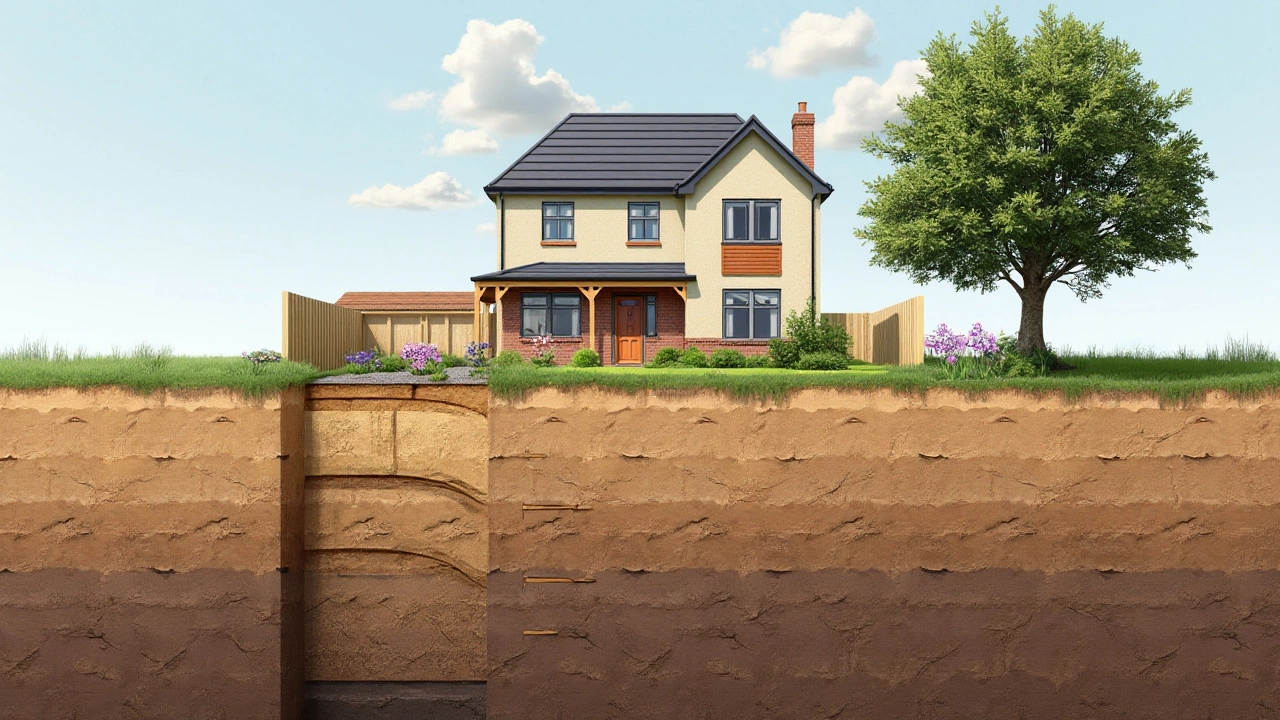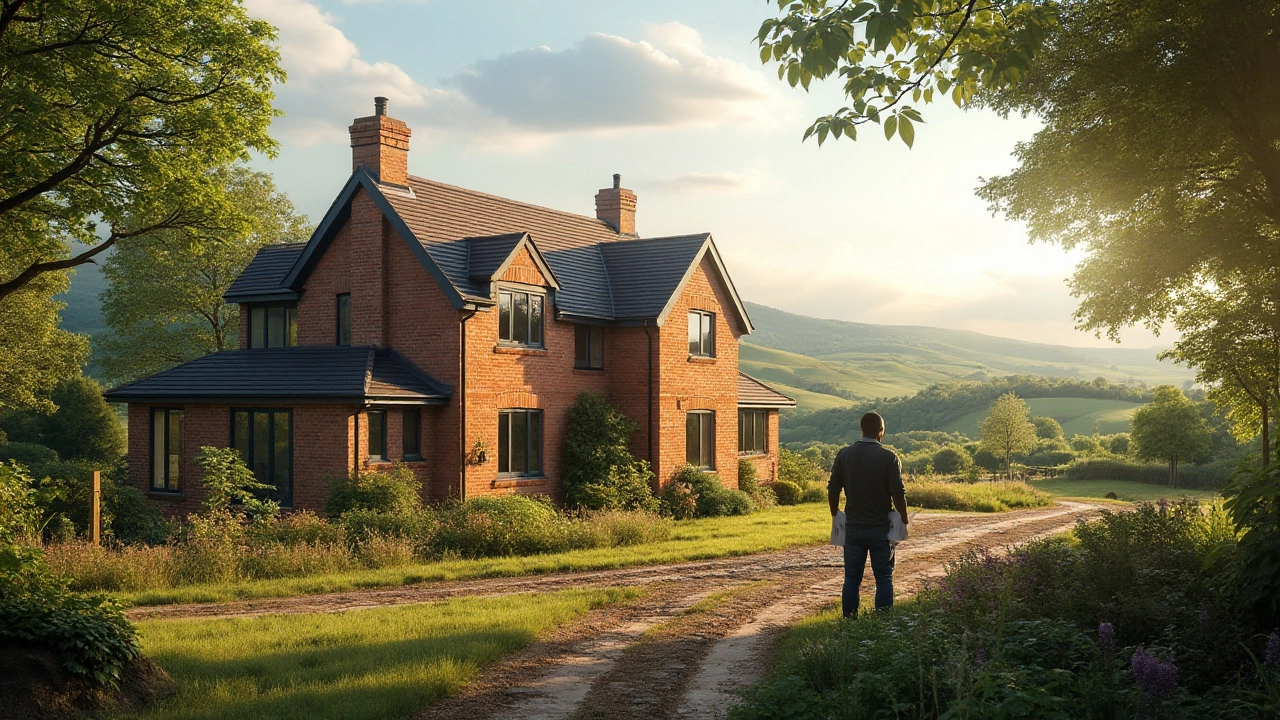When dreaming of a new home, the excitement often runs parallel with a mix of curiosity and concern, especially regarding the longevity and stability of your investment. One of the lesser-known yet crucial aspects of construction is understanding how long it takes for a new building to settle. Settlement is a natural part of the life cycle of any structure, and knowing what to expect can help prevent potential stress down the road.
Many elements influence this process, from the type of soil your home rests upon to the materials used in the construction. Thus, understanding these aspects isn't just for engineers and architects—it's vital knowledge for any homeowner. By diving into this topic, we aim to arm you with insights that ensure your home remains a safe haven for years to come.
- What is Building Settlement?
- Factors Influencing Settlement Time
- Signs of Building Settlement
- Managing and Monitoring Settlement
- Tips for New Homeowners
What is Building Settlement?
Building settlement refers to the natural process in which a newly constructed building gradually sinks or shifts after its completion. This occurs as the structure finds its permanent position in the earth. The most common reason for this happening lies in the weight of the new construction, which compresses the soil beneath. Over time, as gravity does its work, the ground slowly adjusts, leading to this settling process. While the term "settlement" might sound alarming to the uninitiated, it is not usually a cause for concern if the process is understood and anticipated.
There are several types of building settlement, each defined by its unique characteristics. Uniform settlement occurs when all parts of a building sink at about the same rate, maintaining the structure's level integrity. On the other hand, differential settlement can cause one part of the building to sink more than another, often leading to structural issues like cracking walls or uneven floors. The latter is where most problems arise and, thus, is a primary focus for architects and builders during the design and construction phases.
Soil composition plays a crucial role in determining how a building will settle. Different terrains offer varying degrees of stability. Clay soil, for instance, is notorious for its expansion and contraction, causing significant shifts beneath a building. In contrast, sandy soils drain well and compact easily, providing a more stable base. A study conducted by the American Society of Civil Engineers found that approximately 25% of homes in the United States have some form of structural distress due to poor soil conditions.
Another intriguing aspect of settlement relates to moisture. As underground water levels change, which may occur due to seasonal factors or human activities like irrigation, the soil's capacity to bear weight can fluctuate. This can instigate further movement and changes in how a building settlement manifests over time. Monitoring these conditions is vital, particularly in regions where weather patterns vary dramatically across the year.
Construction methods have advanced significantly with insights gained from such cases. Modern engineering tactics employ strategies such as deeper foundations or pile-driven supports to counter potential settlement issues effectively. Moreover, using materials that have known reactions to weather and time helps predict and manage potential settlement outcomes. According to renowned architect Frank Lloyd Wright, "A building should appear to grow easily from its site and be shaped to harmonize with its surroundings." This philosophy echoes the importance of understanding the environment where a structure is created.
Building settlement is not a concept restricted to new constructions alone. Historical buildings provide plenty of examples where settlement has led to distinctive character—sometimes resulting in famous landmarks. The Leaning Tower of Pisa, for example, is a case where differential settlement created an unexpected yet iconic tilt. Though settlement can't be entirely eliminated, with thoughtful planning and execution, its effects can be minimized, ensuring that structures remain both safe and enduring over the long term.
Factors Influencing Settlement Time
When it comes to the time it takes for a building to settle, there are several key players at work beneath the surface. The type of soil, the climate, and the construction materials all contribute to how a structure finds its 'footing' over time. Soil type is perhaps the most significant factor. Clay soils, for instance, can expand and contract with moisture changes, leading to more dramatic settlement compared to sandy soils, which drain well and tend to be more stable. A house built on solid rock may barely see any settling at all, due to the hard and durable nature of the foundation.
Climatic conditions also play a crucial role in building settlement. Regions that experience significant rainfall or seasonal changes may see more noticeable shifts in their structures over time. This happens because the foundation settling adjusts continuously to the annual cycle of freezing, thawing, expanding, and contracting. Additionally, temperature fluctuations affect the construction materials themselves, potentially causing the building to move slightly as materials expand and contract.
Another factor is the construction technique used. Buildings with basements or a deep foundation may settle differently than those on a slab. The weight distribution method, the compactness of the fill used around the foundation, and the length of time the fill settles before construction begins can all influence how a building experiences settlement. As John Ruskin, a known English art critic and thinker, once said, "Quality is never an accident; it is always the result of intelligent effort." This wisdom holds true in building practices, where careful planning and execution can significantly mitigate drastic movements.
To add to this complexity, human activity in the vicinity can alter settlement patterns. Heavy traffic, construction, and even landscaping around a building can change the pressures on the soil and alter the way a building settles. Homeowners often overlook these potential impacts, but they can be significant factors in how a structure behaves over time. In considering settlement, understanding these intrinsic and extrinsic factors helps in managing expectations and planning for future maintenance needs.
Interestingly, some researchers have documented average settlement periods across various soil types and climates, though individual results can vary widely. For instance, a study might show that clay-heavy soils take up to 5 years to stabilize, whereas rocky foundations might require much less time. Data like this may guide developers and homeowners to plan appropriately, ensuring the structural integrity of their buildings.

Signs of Building Settlement
Recognizing the signs of building settlement early on is crucial for maintaining the integrity and safety of a structure, whether it’s your new home or a commercial property you've invested in. Often unnoticed until they become more significant, these signs can sneak up on even the most vigilant homeowners. One of the most common indicators is the appearance of cracks in walls or ceilings. These cracks, although sometimes minor and not immediately alarming, can signify that the foundation is moving as the building settles. It's essential to monitor them, noting whether they’re spreading horizontally or vertically, as these patterns can tell different stories about what's happening beneath your feet.
Additionally, doors and windows that start sticking or don't close properly may also hint at settlement issues. This usually happens because the door frames are no longer perfectly aligned due to the subtle shifts in the house's position. Many homeowners first notice this problem in the changing seasons, often mistaking it for simple changes in humidity or temperature swelling the wood. However, when these issues persist, it might be the building settling and should be checked by a professional.
Visual and Structural Clues
As you make your way through your home, uneven or sloping floors can also serve as red flags. When you drop a ball in the middle of a room and watch it roll away unprompted, it’s a good hint that something isn't quite right below the surface. Feeling an unexpected slope should prompt further investigation, as it may indicate that one side of the foundation is settling quicker than the other. A foundational imbalance can lead to extensive, costly repairs if not addressed promptly.Another subtle yet telling sign can be separated from trim or molding around doors, windows, and along ceilings. These gaps form when parts of your home shift slightly, often in different directions, pulling away previously snug-fit moldings from their original positions. Like the other signs, these gaps typically do not close themselves and can widen over time if the settlement is significant or ongoing.
Homeowners should also be mindful of utility disruptions, such as plumbing issues like frequent backups or slow drains—potential signs that pipes have shifted. Similarly, electrical wiring within the structure might become strained or damaged by unexpected movements within walls or under floors. These disruptions are not only inconvenient but can also pose safety risks.
Keeping an eye on these building settlement indicators can prevent minor inconveniences from transforming into expensive repairs. According to experts at the National Association of Home Builders, “While minor settlement is expected, repeated problems indicate potential underlying issues that need expert attention.” Keeping checklists and regular maintenance schedules can go a long way in helping homeowners identify and address these signs swiftly.
Managing and Monitoring Settlement
Managing and monitoring building settlement is crucial for maintaining the structural integrity of any new construction. The process begins with understanding that building settlement is a gradual phenomenon influenced by multiple factors, including the type of soil, the building's design, local climate conditions, and even the materials used. Soil, for example, comes in various types: clay-rich soils can hold water and expand, while sandy soils may shift more readily under heavy loads. Recognizing these differences at the construction stage helps manage future settling concerns effectively. This proactive understanding not only minimizes the risks of significant damage but can also significantly cut maintenance costs in the long run.
Once the building is standing, it’s critical to remain vigilant. Monitoring involves both professional inspections and homeowner vigilance. A professional structural engineer can perform checks, particularly during the early years after construction, to ensure that all is well beneath the surface. Homeowners, on their part, should be observant for early signs of foundation settling. These might include cracks in walls or floors, doors and windows that jam or fail to latch properly, or noticeably uneven floors. The key is in the detail; subtle shifts could be normal, but persistent issues warrant professional attention. This dual level of vigilance is pivotal in avoiding accumulating structural issues, which can escalate into larger, more expensive problems if left unchecked.
Practical Tips for Homeowners
For those with new constructions, a few practical steps can make all the difference. It's important to establish a baseline for your home's performance. Documenting your home's condition with photos and notes about any initial cracks or imperfections around windows, doors, and corners can offer invaluable references for future assessments. Scheduling regular inspections, particularly after extreme weather events, can provide peace of mind and catch potential issues early.
According to the National Association of Home Builders, monitoring your home every season, particularly during the first five years, is the best approach to address settling issues effectively.Maintaining proper drainage around the building is also key; ensuring that gutters are clear and that water is directed away from the foundation helps prevent excessive moisture accumulation that could exacerbate settlement.
As with any aspect of homeownership, knowledge is power. By understanding the mechanics of settlement and being proactive in monitoring your new building, you achieve peace of mind and help ensure that your home remains as sound as the day it was completed. The goal is to strike a balance between awareness and actionable steps, turning what might seem like a daunting task into a straightforward routine.

Tips for New Homeowners
Embarking on the journey of owning a new home is a thrilling experience, yet it also brings along responsibilities and learning curves. One key aspect new homeowners should anticipate is the phenomenon known as building settlement. This process involves the natural, sometimes slow, adjustment of a building's structure and foundation to the soil it rests upon. Understanding how best to manage and monitor this can offer peace of mind and protect your investment.
First and foremost, familiarize yourself with the type of soil your building rests on. Different soils have varied capacities to bear weight, and some, like clay, can further complicate foundation settling due to their expanding and contracting nature with moisture variations. Knowing whether your soil leans towards sandy, clay, or loamy can provide insights into expected settlement behavior. Engaging a professional to assess this can offer valuable foresight.
Regular Inspections
Conducting regular inspections is crucial. Many experts recommend a thorough check at least once every six months during the first few years. Look for signs such as minor cracks in walls, uneven flooring, or doors that don't close properly. These can be initial indicators of settlement. A seasoned inspector can distinguish between cosmetic issues and those that may require intervention. As famed architect Frank Lloyd Wright once observed,
"The truth is more important than the facts,"emphasizing the importance of understanding the situation fully rather than just seeing data points.
Keep an Eye on Drainage
Another crucial aspect is the role of water management around your home. Poor drainage can exacerbate settlement by adding unnecessary moisture to the soil, leading to added instability. Ensure your gutters are clean, downspouts direct water away from the foundation, and your landscaping slopes away from the house. Not only do these measures protect against excessive settlement, but they also prevent water damage, a common culprit behind many structural issues.
Engage with Professionals
Some settlements are natural, but not all are harmless. Engaging professionals early on can save you significant time and money in the future. Foundation experts and structural engineers have the tools and expertise to measure settlement and recommend solutions if corrective actions are necessary. Often, addressing minor issues early prevents them from escalating into major problems.
| Soil Type | Common Characteristics |
|---|---|
| Clay | Expands/contracts with moisture, leading to variable settlement |
| Sandy | Stable but susceptible to erosion, may settle uniformly |
| Loam | Ideal balance for building, typically stable and uniform settlement |
In each of these measures, maintaining good records is essential. Keep detailed logs of inspections, diagrams or photographs of any noticeable changes, and correspondence with professionals. These documents not only help track the progress of settlement but provide valuable information if you decide to sell the property in the future.
Owning a home is more than just maintenance; it's about fostering an environment that grows and adjusts with your family. Embracing these proactive steps will ensure your new building not just settles, but does so securely and gracefully over time.

Author
Damon Blackwood
I'm a seasoned consultant in the services industry, focusing primarily on project management and operational efficiency. I have a passion for writing about construction trends, exploring innovative techniques, and the impact of technology on traditional building practices. My work involves collaborating with construction firms to optimize their operations, ensuring they meet the industry's evolving demands. Through my writing, I aim to educate and inspire professionals in the construction field, sharing valuable insights and practical advice to enhance their projects.